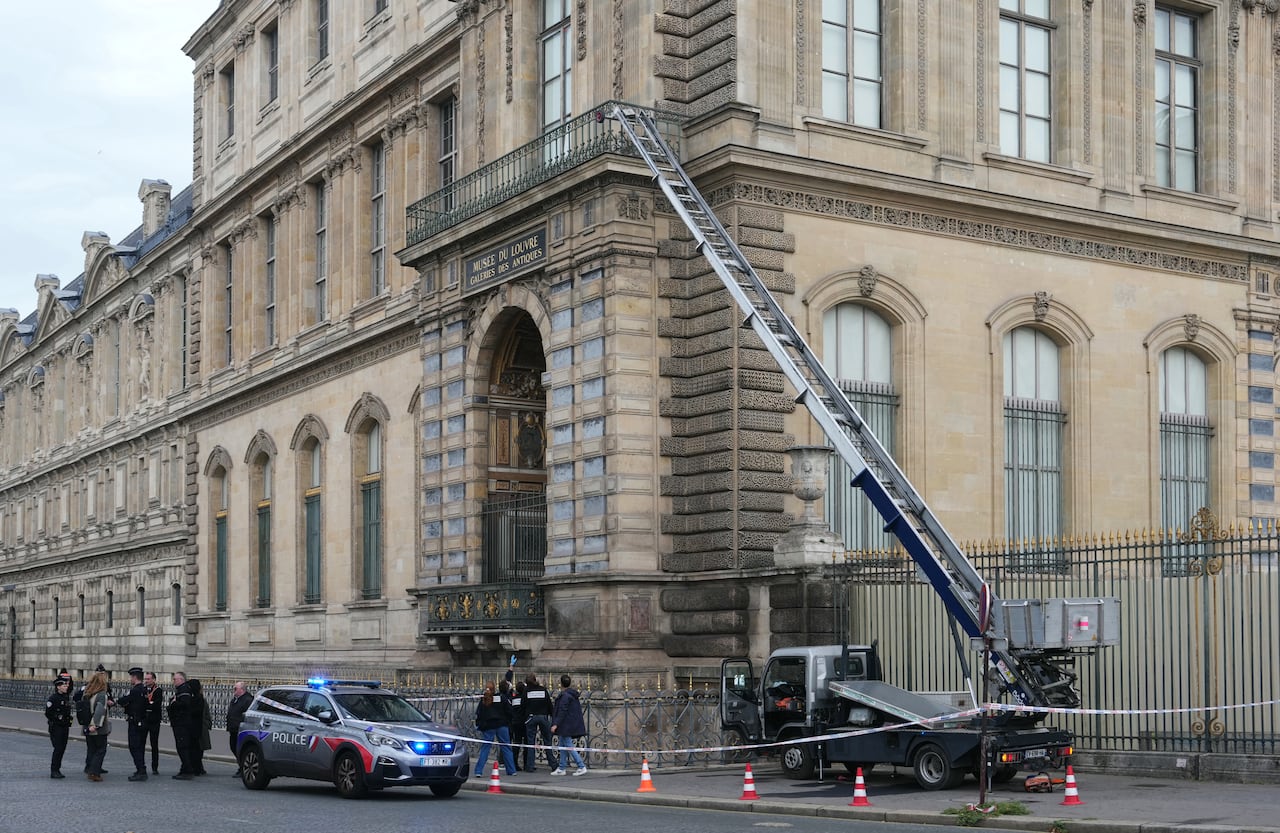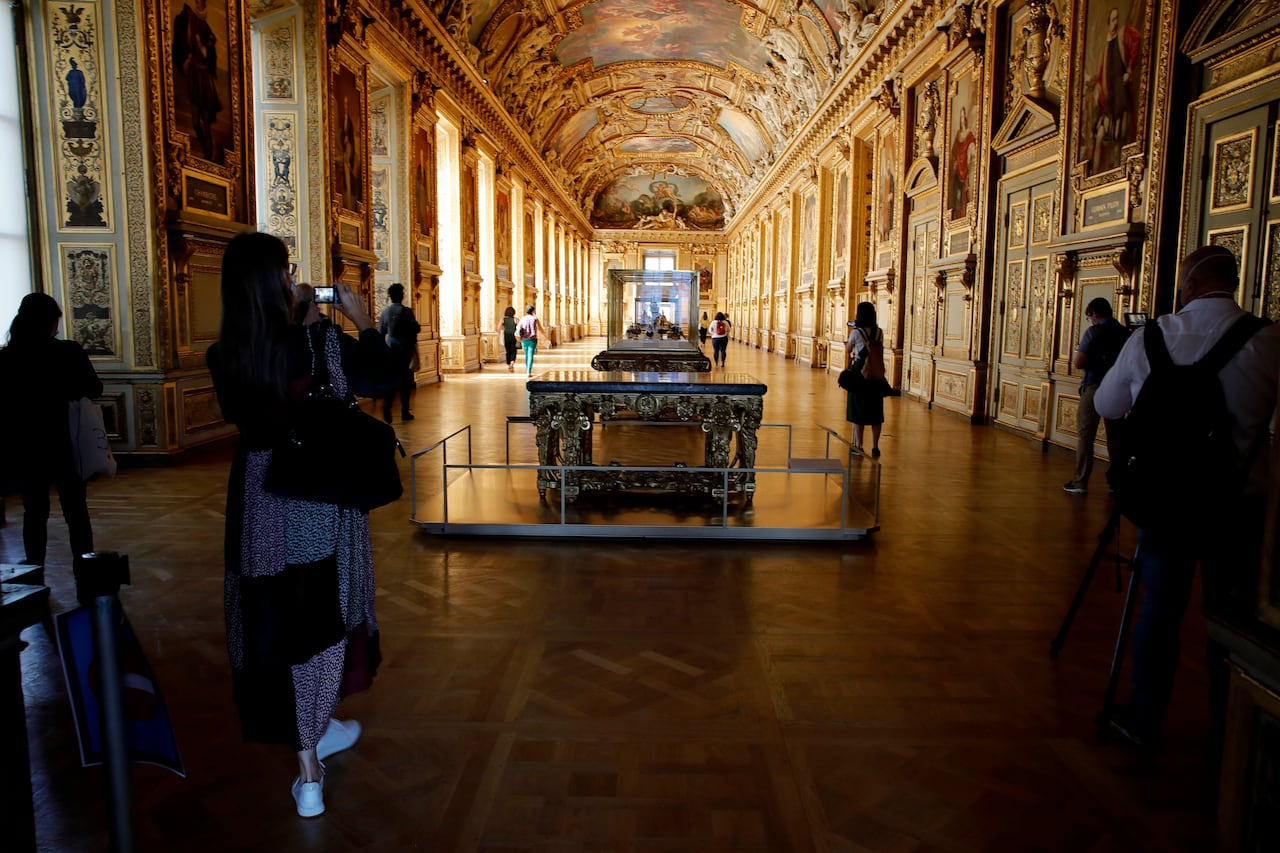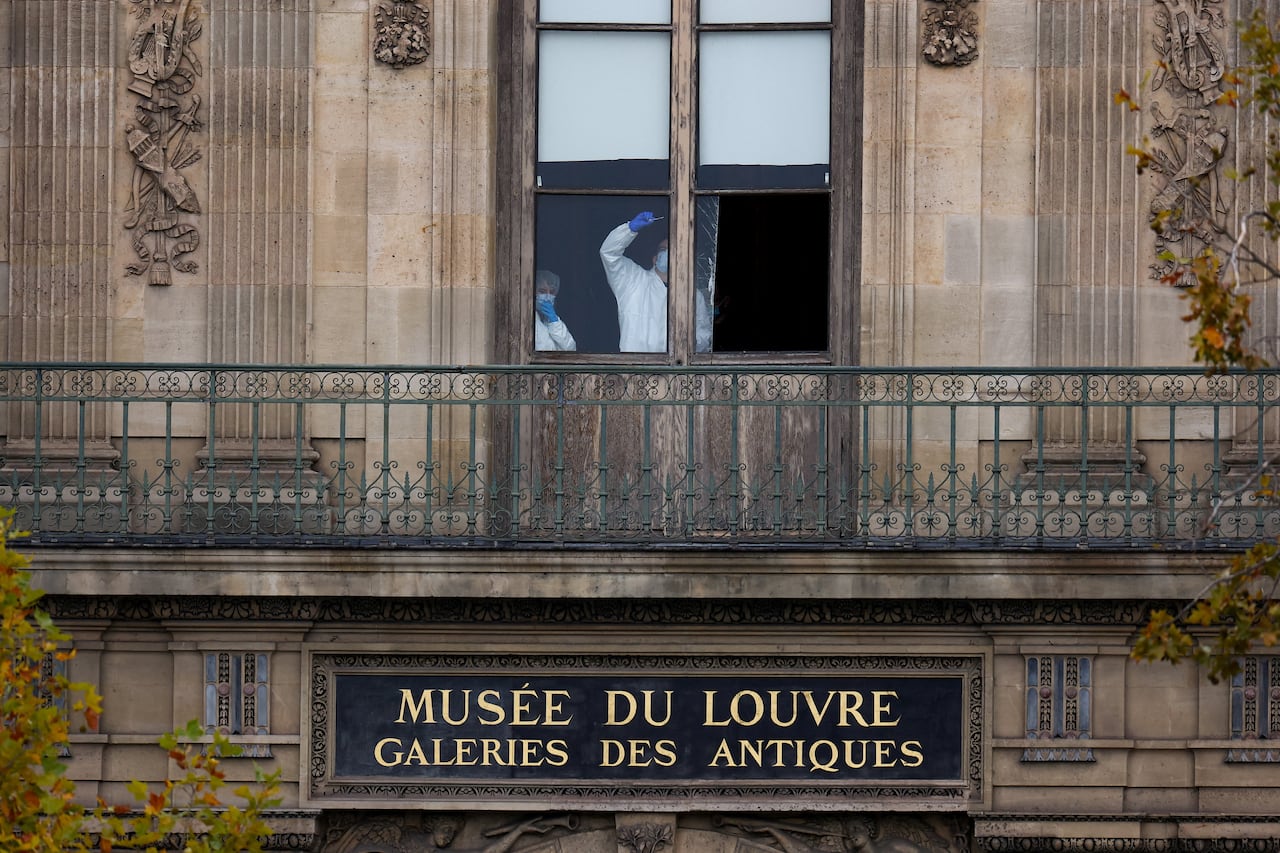Thieves in balaclavas, on motorbikes rob crown jewels in Louvre heist

Thieves in balaclavas broke into Paris's Louvre museum on Sunday, using a crane to smash an upstairs window, then stealing priceless objects from an area that houses the French crown jewels before escaping on motorbikes, officials said.
The robbery is likely to raise awkward questions about security at the museum, where officials had already sounded the alarm about a lack of investment at the world-famous site, home to such artworks as the Mona Lisa. The Louvre welcomed 8.7 million visitors in 2024.
"The theft committed at the Louvre is an attack on a heritage that we cherish because it is our History," President Emmanuel Macron said on social media platform X. "We will recover the works, and the perpetrators will be brought to justice."
The thieves struck at about 9:30 a.m. local time, when the museum had already opened its doors to the public, and entered the Galerie d'Apollon wing, Paris prosecutor Laure Beccuau said on French TV.
The robbery, which took between six and seven minutes, was carried out by four people who were unarmed but who threatened the guards with angle grinders, she said.

A total of nine objects were targeted by the criminals, and eight were actually stolen. The thieves lost the ninth one, the crown of Napoleon III's wife, Empress Eugénie, during their escape, Beccuau said.
"It's worth several tens of millions of euros — just this crown. And it's not, in my opinion, the most important item," Drouot auction house president Alexandre Giquello told Reuters.
France's culture ministry said the following jewels remain missing:
- Tiara from the jewelry set of Queen Marie-Amélie and Queen Hortense.
- Necklace from the sapphire jewelry set of Queen Marie-Amélie and Queen Hortense.
- Earring, part of a pair from the sapphire jewelry set of Queen Marie-Amélie and Queen Hortense.
- Emerald necklace from the Marie-Louise set.
- Pair of emerald earrings from the Marie-Louise set.
- Brooch known as the reliquary brooch.
- Tiara of Empress Eugénie.
- Large bodice knot (brooch) of Empress Eugénie.

Beccuau said it was a mystery why the thieves did not steal the Regent diamond, which is housed in the Galerie d'Apollon and is estimated to be worth more than $60 million US by Sotheby's.
One of the thieves was wearing a yellow reflective vest, which investigators have since recovered, she said, adding that the robbers tried and failed to set fire to the crane, mounted on the back of a small truck, as they fled.
Probe underway by specialist unitInterior Minister Laurent Nuñez said the probe had been entrusted to a specialized police unit that has a high success rate in cracking high-profile robberies.
Investigators were keeping all leads open, Beccuau said. But she said it was likely the robbery was either commissioned by a collector, in which case there was a chance of recovering the pieces in a good state, or undertaken by thieves interested only in the valuable jewels and precious metals. She said foreign interference was not among the main hypotheses.
"We're looking at the hypothesis of organized crime," Beccuau said, adding that it could be thieves working on spec for a buyer, or seeking to get access to jewels that can be used to launder criminal proceeds.
"Nowadays, anything can be linked to drug trafficking, given the significant sums of money obtained from drug trafficking," she said.
Questions on securityThe Louvre, the world's most-visited museum, said on X it would remain closed for the day for "exceptional reasons."
Joan and Jim Carpenter, visiting Paris from Santa Cruz, Calif., said they had been moved out of a gallery just as they were about to see the Mona Lisa.
"Well, when you rob the Louvre, that's a big deal to all of France, so I knew something was up because of the way they swept the whole museum," Joan Carpenter said.

The Mona Lisa, by artist Leonardo da Vinci, was stolen from the museum in 1911 in one of the most daring art thefts in history. A former employee who carried out the heist was eventually caught, and the painting was returned to the museum two years later.
Earlier this year, officials at the Louvre requested urgent help from the French government to restore and renovate the museum's aging exhibition halls and better protect its countless works of art.
Culture Minister Rachida Dati said the issue of museum security was not new.
"For 40 years, there was little focus on securing these major museums, and two years ago, the president of the Louvre requested a security audit from the police prefect. Why? Because museums must adapt to new forms of crime," she said. "Today, it's organized crime — professionals."
cbc.ca





